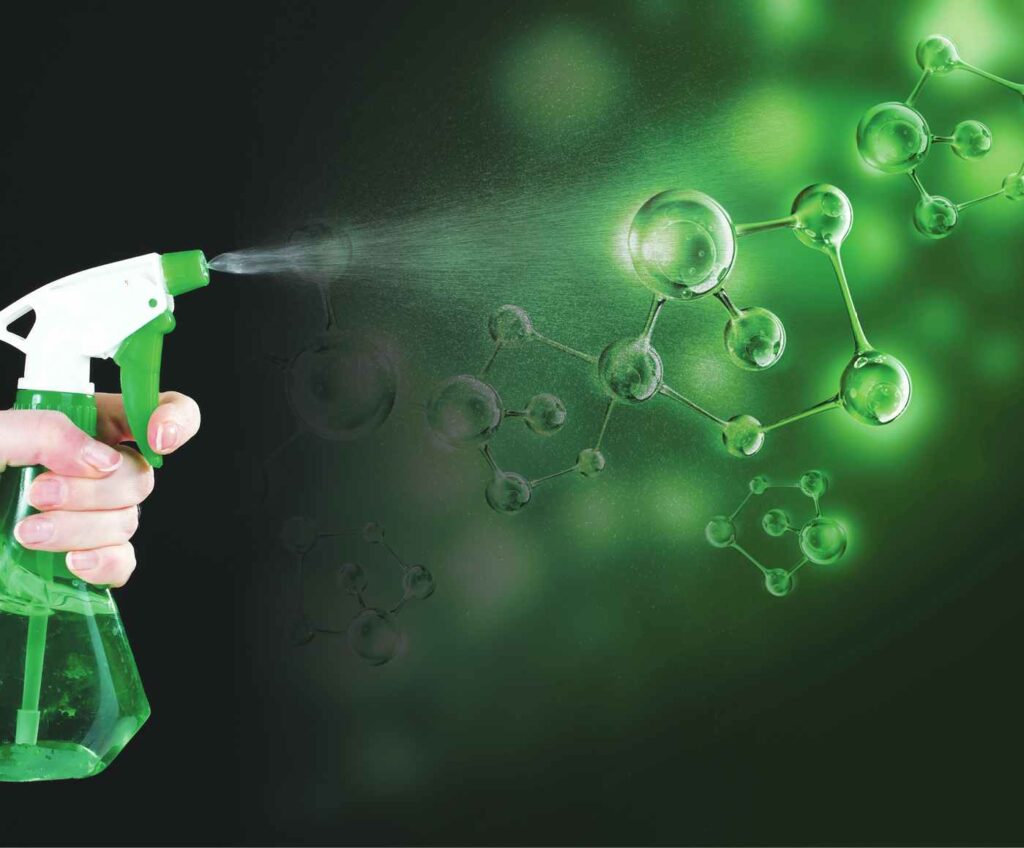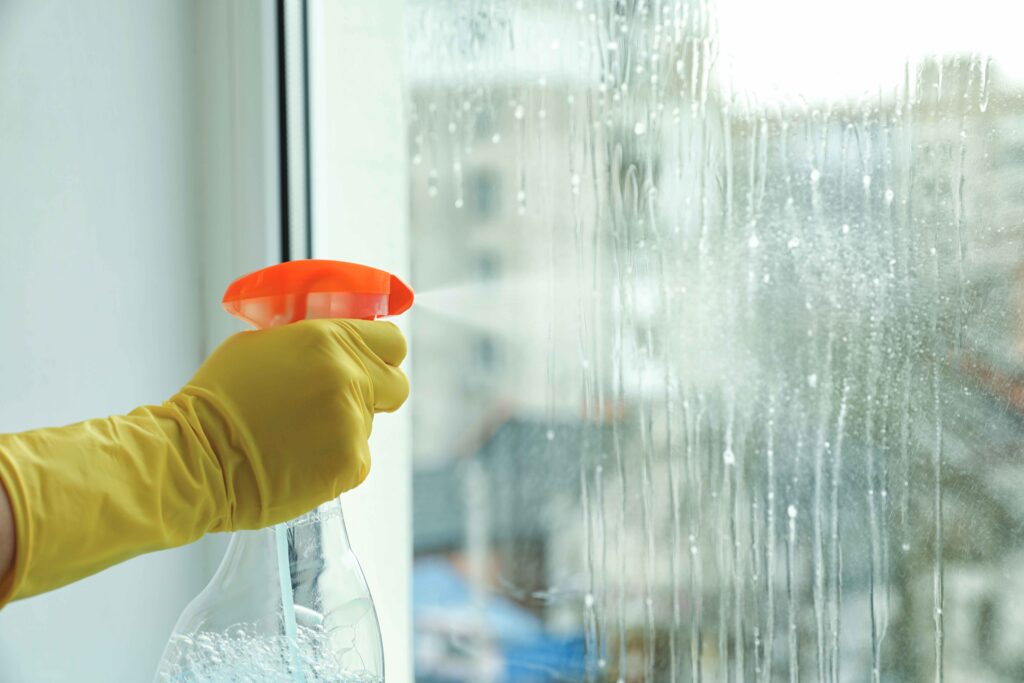
The market research report released by various agencies has estimated encouraging growth for the Green Cleaning Products Market globally. Valued at US$ 2.4 billion to USD 320 billion including the household sector as of March 2024, the market is projected to grow at a CAGR between 7% to 21.10% by 2034. As industries and households increasingly shift towards green cleaning practices, the market for green products looks promising. Clean India Journal assesses the present consumer behaviour and the suppliers’ limitations as against this growing demand. in interaction with diverse industry consumers and green solutions manufacturers
Naturally occurring chemicals include unprocessed chemicals found in nature. These include chemicals that can be sourced from plants, microorganisms, animals, the earth, and the sea, and those that are found in nature and extracted using a process that does not change their chemical composition.
Green chemicals, also known as sustainable or eco-friendly chemicals, cover a wide range of products and processes designed to reduce environmental impact and achieve sustainability. These chemicals are derived from renewable resources and designed to be safer for human health and the environment compared to conventional chemical counterparts. An array of segments falls under the umbrella of green chemicals, including:
Bio-based Chemicals: These chemicals are sourced from renewable biomass sources such as plants, algae, or waste materials. Examples include bio-based solvents, biofuels, and bioplastics. Bio-based cleaning products are used to manufacture soaps, detergents, and pesticides.
• Biodegradable Polymers: These are designed to break down into natural components when exposed to sunlight, moisture, and microorganisms. Biodegradable polymers are used in various applications, like packaging, agriculture, and textiles.
• Green Solvents: Green solvents are environment-friendly alternatives to traditional solvents sourced from petroleum-based sources. They have lower toxicity and volatility compared to conventional solvents.
• Plant-derived Surfactants: Surfactants are used in cleaning products to break down grease and dirt. Plant-derived surfactants are derived from renewable plant sources and are biodegradable and less harmful to the environment than synthetic surfactants.
• Natural Extracts and Essential Oils: Natural extracts and essential oils are derived from plants and are used in various applications, including fragrance and flavoring, cosmetics, and household cleaning products.
• Green Catalysts: Catalysts are substances that increase the rate of chemical reactions without being consumed in the process. Green catalysts are more sustainable and environment-friendly than conventional catalysts, often using non-toxic or renewable materials.
• Recycled Chemicals: Recycled chemicals are produced from post-consumer or post-industrial waste streams and undergo processes to purify and reuse them as raw materials in new products. This reduces the demand for virgin materials and minimizes waste.
These segments encompass just a few examples of the diverse range of products and processes within the green chemicals industry. Green chemicals have gained significant traction in industries and institutions.

Green Chemicals in Industries:
Manufacturing: Green chemicals are used in manufacturing processes across industries such as automotive, electronics, textiles, and pharmaceuticals. They are used as solvents, catalysts, and raw materials in the production of plastics, polymers, adhesives, and coatings.
Cleaning and Maintenance: Industries rely on cleaning chemicals to maintain hygiene and cleanliness in their facilities. Green cleaning chemicals, formulated using biodegradable surfactants and plant-based ingredients, are preferred for their effectiveness in removing dirt and grease without harming the environment or posing health risks to workers.
Water Treatment: Green chemicals are used in water treatment processes, including wastewater treatment, desalination, and water purification. Biodegradable coagulants and disinfectants are used to remove pathogens from water sources.
Energy Production: Solar, wind, and hydroelectric power rely on green chemicals for manufacturing components, including photovoltaic cells, wind turbine blades, and battery systems. These chemicals reduce the environmental footprint of energy production.
Agriculture: Green chemicals are used in agriculture to minimize the environmental impact of fertilizers, pesticides, and herbicides. Bio-based fertilizers and pesticides reduce soil and water contamination and promote sustainable farming practices.

Green Chemicals in Institutions:
Healthcare Facilities: Hospitals, clinics, and healthcare facilities prioritize patient safety and infection control, making green cleaning chemicals a preferred choice for maintaining sterile environments. They are effective against pathogens while minimizing exposure to harmful residues and volatile organic compounds (VOCs).
Educational Institutions: Schools, colleges, and universities utilize green chemicals for cleaning classrooms, laboratories, and common areas. Non-toxic, biodegradable cleaning solutions help protect students, teachers, and staff from chemical exposure and contribute to a healthier learning environment.
Hospitality Sector: Hotels, resorts, and restaurants rely on green cleaning chemicals to maintain cleanliness in guest rooms, dining areas, and public spaces. Environment-friendly cleaning practices enhance the guest experience by promoting a healthier, more eco-conscious environment.
Government Buildings: Government institutions and public offices prioritize sustainability and environmental stewardship in their operations. Green chemicals are used for routine cleaning, maintenance, and facility management.
Commercial Properties: Office buildings, shopping malls, and commercial complexes implement green cleaning programs to create healthier, more sustainable environments for tenants and visitors. Green chemicals contribute to indoor air quality, reduce waste generation, and support green building certifications such as LEED (Leadership in Energy and Environmental Design).
Green chemicals play a crucial role in industries and institutions by offering environmentally responsible alternatives to traditional chemical products. Since various segments fall under green chemicals, it is difficult to quantify their market trends accurately as they are divergent across segments. Also, several segments like industries that employ green chemicals use a mixture of them to achieve the desired results. Nevertheless, the progress in utilizing green chemicals across various sectors is promising as the government has spelled out sustainability goals and charted many awareness channels to educate the consumer on the urgency of adopting sustainable practices to protect our planet for ourselves and future generations.
 CIJConnect Bot-enabled WhatsApp
CIJConnect Bot-enabled WhatsApp









